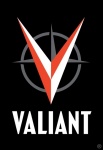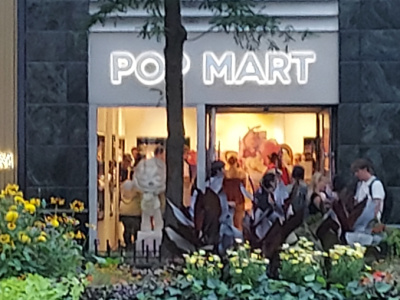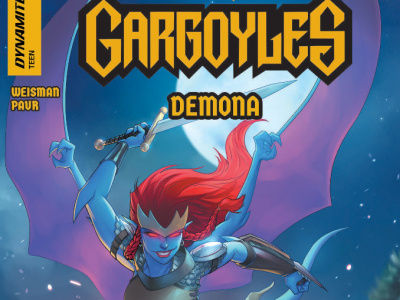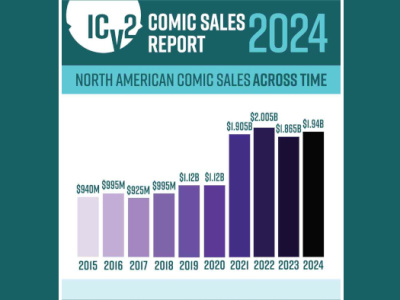
We caught up with Valiant Entertainment Publisher Fred Pierce at Comic-Con, and asked about Valiant’s strategy, collections, other media, and the Gold Key characters.
How have Valiant’s first few months gone and how did you do vs. expectations?
We actually did better than expectations. We didn’t do better than our hopes, but we clearly did better than our expectations. Our first sales were well over 45,000 for our X-O Manowar #1 book. I was amused that there were certain people in the industry who thought that the numbers were being padded. You know you’re successful when people think you’re cheating with real numbers of success. That was wonderful.
What’s your reprint situation?
X-O Manowar #1 reprinted and sold out almost immediately. We’re shipping the third print of X-O #1. X-O #2 we’re working on a second print right now for that as well.
Valiant had an advantage over any other company that’s launching. We were such a big success years ago and comic books are such a religion with so many of the comic book fans. We’ve had guys who were looking for this for 15-20 years now. There’s a Valiant fan club, so we had all these ambassadors who were wishing us success and hoping that we would come across with good books, or books that were at least as good as the books in the past.
You’ve done some variants. What do you think the relationship is between the number of copies sold and the number of readers?
It’s very hard to tell in the comic book industry. It’s easy to say it’s at least one to one, because you have some variants and some people will buy two books or will buy the variants. Any book that’s brought into an elementary school or into a junior high school is read by four to six people. Any book that’s at a summer camp, and this is summer camp time, might be read by 10 people.
How many readers do we have? I think the readers always extend far past how many you sell on some level, but actually who has possession of the books is clearly less than the number that you sell.
How many variants were there on X-O Manowar #1?
Pierce: We had a pull box variant which was designed because we wanted to bring the lapsed Valiant fans back into the comic book store, and we wanted to give the comic book retailer an advantage where they had to come into the store to see this alternate cover. It wasn’t an incentive, it was a true variant where as long as you had a pull box you could order one or the other.
We had a one in 20 variant. It was very hard to tell the retailer and the consumer how many of our product they should buy. How did they know if they should buy one Valiant product or five, so having a one in 20 variant really tells them "you really should treat us like Iron Man, say, or some top 50 book" which was really what we were shooting for-- what we hope and not what we expected necessarily.
And then we had this idea (and we’re still not quite sure how it developed) of doing the QR[Quick Response Code]variant which is a one in 50 variant where we had the talking QR code that Neal Adams’ studio did so well for us. It was either going to be the cheesiest, nerdiest thing around and it was a real stretch to launch with the company, but we had 20,000 downloads and more today. We still have more all the time. It really was very well received and it was a way to bring digital onto a comic book cover on some level.
What are your plans for collections?
Pierce: Basically, between two and four months after an arc’s finished, we’ll do a trade paperback.
And how long are your arcs?
Pierce: Arcs will between four and six stories. The publisher in me likes four; the editorial staff wants as many issues as we need to tell the story. We’ll see the first trade paperback by the end of the year. Part of the problem that we have is since we’re selling into the comic book store my question is, "How much can a comic book retailer expand his budget for Valiant titles today?" The fans are fine, but the real gatekeepers we have are the comic book stores. So is he going to expand his budget by $100, $200, $300? And the next month you have two books and the next month it’s three books and the next month it’s four books. Let’s say in November if we’re launching a new book, is that when you come out with a trade paperback or do you save that for another time? But those are the questions you have to ask because at the end of the day that first order is very important. It takes a lot of time to overcome a first order that’s too low.
What’s going on with digital--are you windowing?
Pierce: We launched day and date with comiXology. We had debated it six months before but by May when we were launching it just became industry standard. There was not really a reason not to. As you might well imagine we’ve being going to all the conventions even if we’re not setting up, speaking to retailers. Hunter [Gorinson], our marketing manager who’s here, Dinesh [Shamdasani]and Atom! [Freeman], our head of sales have been going into comic book stores. Invariably most of the comic book retailers, especially the retailers who are very successful, said it won’t hurt them.
And that’s because they are different customers?
Pierce: I think it’s a different population. I think the person who’s buying the Valiant comic in print, and buying comics in general, is going into a comic book store and likes the touch and feel of it. I think the digital comic buyer is probably much more along the lines of the old newsstand buyer. It’s a different buyer, it’s a different look; they’re looking at different things.
I don’t know how much of an overlap there is between digital and print buyers or somebody who buys print and then says "I really need to have that on my digital reader," but the more successful we are in print and we are as an industry, the more successful we’re going to be digitally and the more successful we are digitally, I think the more successful we are in print because it’s all promotion for everything.
Looking ahead you just had some big press come out this week on your plans in other media. Is that really where you see the big payday for Valiant?
Pierce: I don’t think you can really be running a comic book intellectual property without thinking that it could go into these other things. When I took the job as publisher it was made very clear to me, and it’s been made very clear to me by all the subsequent investors, that we’re a comic book publisher first. If your comic book publishing isn’t successful, everything else is much more difficult. But yes, we’re dealing with Sony on a Bloodshot movie and these things, but the truth of the matter is the publishing division has to stand on its own and it’s the publishing division that draws heat to the rest of the company. In two or three years when we have a movie it’ll go the other way also, but right now we have to establish ourselves as a publishing company that’s exceptional.
Looking back, these properties were used in video games. Was that their only use in other media prior to this?
Pierce: Yes. Acclaim was a public company which was doing video games had bought Valiant in 1994 and they took those rights and they made some very successful videogames out of it, but nothing else was ever done with the rights. It had never been movies; it had never become anything else.
Are you trying to get the Gold Key characters back?
Pierce: At this point in time we’re not. Mike [Richardson] at Dark Horse has them and I’m sure we’ll have certain discussions, but I’m very happy with characters that we have. We can mine the characters that we have for another two, three, four years. A lot of people have asked if we’ll launch new characters and I’ll be happy to launch new characters if any of the new characters are better than the characters we still haven’t launched. We haven’t launched Shadowman, Rai, Eternal Warrior, Dr. Mirage, or Quantum and Woody (Quantum and Woody wasn’t even part of the original Valiant universe, but it is part of the intellectual property that we control).
We have so much to do and we’re trying to have a slow growth. We launched one comic a month for four months. We’re going to take a break from it. Sometime between now and April, which will be a year that we’ve been publishing, we hope to launch two more properties.
So six in the first year and then four in each year after that. Again, if we’re hugely successful maybe we'll do more but the plan is really four. Let’s give everybody a chance to absorb the universe because Valiant is a universe. You can read any comic individually but you’ll get more out of the universe like you would with the DC or Marvel universe if you read more of the properties, and as things happen in one book you might see some passing reference to it in another book down the road. That’s really what we’re doing.







